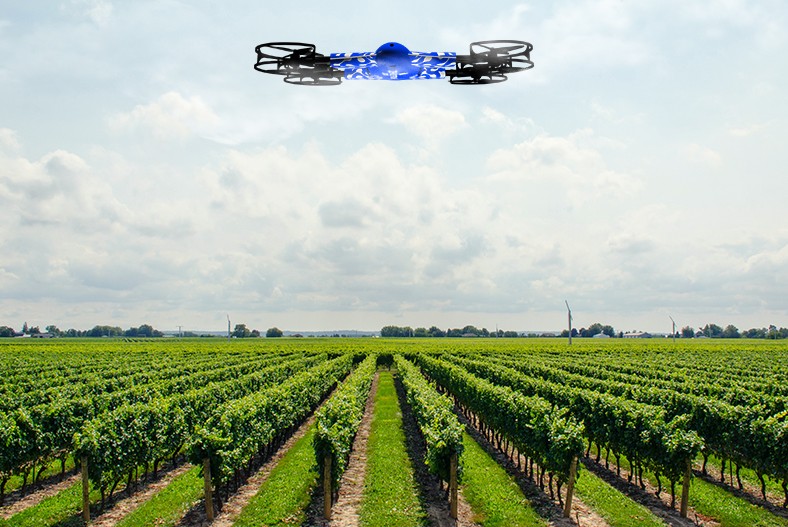Optimize Farm Efficiency with Drone Technology
Farming with Drone Technology
Agriculture is an essential industry worldwide, and with a rising population, farmers must increase output to meet demand. Agricultural drone services in agriculture and farmlands enable agriculturists & farmers to improve their field activities and optimize production.
Aerial Surveillance on Farmland
Agriculture drone services offer various solutions like aerial surveillance and scanning, allowing farmers to monitor field vegetation and crop health efficiently. Manually monitoring vast, unreachable farmland areas is challenging, but drone services for agriculture make this task easier. Farmers can track plant growth and crop conditions more effectively with drones with 4K cameras and multispectral sensors. These agriculture drone services provide high-definition footage that helps evaluate farm conditions.


Monitor and Track Plantations' Health
Agriculture drone services allow farmers to use drone sensors to monitor plant health, identifying crop infections and changes. Recognizing threats early enables immediate solutions, which avoids production inefficiencies. The drones used in agriculture allow for efficient monitoring and tracking of plant health, which enhances productivity.
Automated Planting and Seeding
Drone agricultural services offer an automated planting method that significantly enhances farming. Farmers can use drones to distribute seeds into well-prepared soil, which reduces manual costs and increases production. This allows farmers to utilize all sections of their fields, even those that are challenging to reach. Drones used in agriculture provide an efficient and fast way of planting, leading to greater overall production.
Spraying Application
An agricultural drone company provides precision spraying for optimal resource management. These services allow farmland surveys and pinpoint areas that require attention, making spraying more efficient than ever. Using agricultural drones for spraying facilitates access to previously unreachable areas, optimizing water and chemical application. Additionally, utilizing drones helps the agricultural sector move away from harmful chemical back sprays, protecting farm workers’ health. Thus, this method maximizes water and chemical spraying efficiently while reducing costs and being more eco-friendly.
Provide Security for Farmlands
Farm owners can use drone cameras for frequent aerial surveillance of their farms at any time, enabling monitoring of the farm status and evaluating its operations. Drones also help locate misplaced equipment, oversee farm fencing, and enhance security by preventing intruders. A drone agriculture company can provide all of these advanced technologies, and this technology contributes to the full supervision and maintenance of overall farm security.

